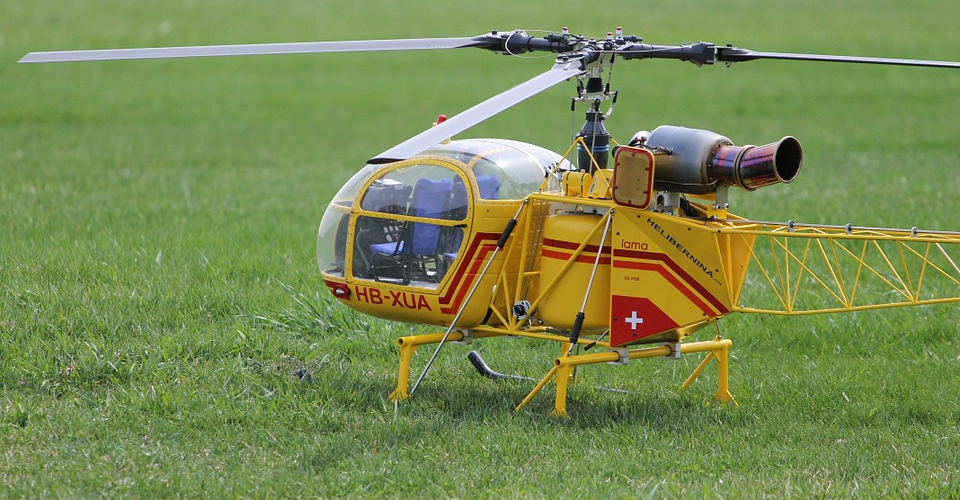Pros and Cons of Gas and Nitro Powered RC Helicopters
A gas powered RC helicopter is a formidable beast and certainly not for the faint-hearted. You wouldn’t take to the controls without some previous flight experience. Enthusiasts who pilot these incredible flying machines are a rare breed. Those who graduate to large-scale gas or nitro helis will tell you that it’s a feeling like no other. But what is it that attracts RC pilots to whirlybirds powered by gas?
The answer is a simple one, and that is realistic flight characteristics. The size, weight, noise, and readily available fuel all contribute to the lure. But why not nitro? Well, nitro has its following too, but gas is more popular for several reasons. Keep reading for the comparison.
Gas Helicopter Pros
Here are the most significant advantages gas helis have over their nitro counterparts:
- Regular gasoline and 2-cycle oil is available everywhere
- Cheaper to operate compared to nitro
- Tend to be easier and more reliable starters
- Gas helicopter engines are cleaner
- The engines are quieter as they run at lower RPM
- Produce less high-frequency vibration due to lower RPM
- Long life expectancy
- Better fuel economy and longer flight times
Some gas choppers can stay in the air for 30+ minutes on a full tank of fuel. However, there are still a few disadvantages despite all the positives above.
Gas Helicopter Cons
There’s no such thing as the perfect RC helicopter, and that includes these big beautiful birds. Below are a few of the areas where they don’t fare as well as their nitro counterparts:
- Forget 3D aerobatics and fast, agile fancy flying (see below)
- More damage-prone in a crash due to heavier weight and bigger size
- Shortage of gas helis to choose from (at the time of writing)
- The sheer weight and size make them more expensive than nitro
- Produce strong “low-frequency” vibrations
Gas-powered helicopters have the lowest power-to-weight ratio of nitro and electric. That’s why you can’t throw them around in the air and perform fancy stunts and extreme aerobatics.
Nitro Helicopter Pros
Nitro-powered RC helicopters have its loyal fan base too. People—especially sellers—often use gas and nitro interchangeably, but it’s wrong. There are distinct differences between gas and nitro fuel birds. Nitro engines use glow plugs and nitro fuel, which is a mixture of nitromethane and oil. Gas engines use spark plugs and 2-Stroke fuel which is a combination of unleaded gas mixed with 2-stroke oil.
Here are the most significant advantages nitro helis have over their gas counterparts:
- Established design that benefits from long life expectancy
- Crash-resistant, almost indestructible engines
- The sound, though the noise of a nitro engine is subjective
There are fewer advantages of nitro helicopters compared to their gas counterparts. Even so, the first two pros above are important selling points for fans of these engines.
Nitro Helicopter Cons
- Some pilots love the overly loud high-pitched noise, but others hate it
- Nitro engines are messy because of the high oil content
- More difficult to set up and tune than gas engines
- Fuel mixture must be 100% spot-on for safe flying
- Glow fuel is not readily available like regular gas (see below)
- Nitro fuel costs considerably more than gasoline
- Poor fuel economy
- Long-term operating costs are higher
- Needs special starting mechanisms
Nitro fuel is classed as a hazardous substance—think drag racing. You must buy it at authorized hobby stores which can be inconvenient. It’s also costly and not easy to ship.
Turbine RC Helicopters Pros
The lesser-known turbine-powered RC helicopters are also worth a mention. They’re expensive, big, heavy, and need skills and knowledge to run them. These beasts run on regular kerosene. That’s a jet A1 fuel, typically mixed with turbine jet oil, or sometimes a quality 2-cycle engine oil.
Here’s a quick breakdown on the positives of a turbine-powered RC helicopter:
- The most realistic experience of all RC helicopters
- Little to know engine vibration
- No tuning headaches thanks to the engine’s efficient computer
- Reliable power; less prone to cut-outs
- Sweet smell and powerful noise loved by pilots
- Visible heat waves from the exhaust add to the realistic experience
- Size and weigh add further to the heli’s realistic flight characteristics
- Available in large scale or pod and boom
- Provides skilled pilots with welcome challenges
- Immensely rewarding experience
- Enjoyable learning curve for enthusiasts
It’s not all good, though. These beauties are not for everyone, even if you have deep pockets.
Turbine RC Helicopters Cons
- Prices from $5000 to $15000 put turbine helis out of reach for many fans
- Kits not readily available like gas, nitro, or electric RC choppers
- Turbine bearings need replacement after around 50–80 hours use
- More complicated than other RC engine types
- Needs regular maintenance, like gas and nitro
- Higher overall operating costs though the fuel is reasonable
- High cost of repairs/replacement; not crash-resistant due to mass
- Not overly agile or aerobatic capable due to size and power-to-weight ratio
- Fire risk; fuel ignites too easily, especially in a crash or hard landing
Summing Up
That concludes this brief introduction to RC helicopters that use liquid fuel. The gas-powered RC model is my recommendation for anyone coming from electric RC helis. You get to fly large scale models or pod and boom choppers. Gas whirlybirds are much cleaner and less complex than nitro. Costs are reasonable considering what you get, and fuel is cheap and readily available.

